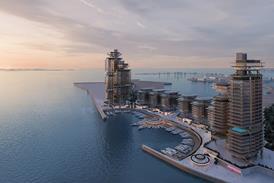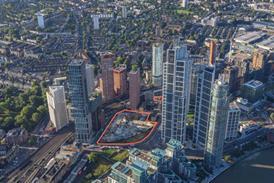David Rudlin on why the most sustainable places to build may not always be in the grey belt

It used to be a proud boast of mine that after a career of working on master plan-led planning applications, I had never had a refusal. Then, just before lockdown, I broke my duck on a site just outside Sheffield in what we would now call the ‘grey belt’.
There had been some debate in the office when we first took on the job. It was not the green belt location that bothered us. It was a derelict factory (a former refractory that made bricks for the city’s furnaces), most of the buildings were made of asbestos and, while it sat within a beautiful valley, it was an eyesore and a health hazard. I believed, naively as it turned out, that redevelopment was a no-brainer.
What did concern us in those office debates was the remoteness of the site. It was a good distance from the nearest schools and shops and the bus service wasn’t great, so our worry was that it would be car-dependent. However, the developer committed to subsidising a bus service, investing in a homeworking hub, providing a cycle hire facility and a car share scheme, so we got to the point where we thought it was arguable.
In the event, accessibility was hardly discussed at the subsequent planning enquiry. Fortunately for me, the planners didn’t object to the master plan, so my evidence also went uncontested. Instead, the argument was dominated by a technical discussion about the curtilage of the factory and whether areas that had gone back to nature should be considered part of the site.
Today, presumably, the site would have been squarely within the grey belt and my record would have been intact. But in this case, the inspector found for the council.
It is fitting that this should have happened in Sheffield, as the city has the UK’s oldest statutory green belt
It is also worth noting that a contributory factor was the low level of affordable housing on offer once the remediation costs and access measures had been costed. The assumption that, because a site is in the green belt, the development is going to generate sufficient value to support 50% social housing is just not the case in most northern cities.
It is fitting that this should have happened in Sheffield, as the city has the UK’s oldest statutory green belt (it was designated as part of Abercrombie’s 1939 plan for the city). The original idea had been suggested in London, where it was to have been called the ‘green girdle’. Renamed as the much more attractive ‘green belt’, it became part of the new planning system in 1947, and its purposes were set out in a government circular as long ago as 1955. It has since grown to cover 12.6% of the country and to become one of the most successful planning policies of all time.
>> Also read: ‘Green’ places are not always the most sustainable. Can Labour square the circle on green space and urban density?
For the record, I think green belt policy is a very good thing. It saved UK cities from the sort of suburban sprawl seen in the US, and it works because, in a discretionary planning system, it is one of the few policies that allows little discretion. It is almost impossible to get planning permission in the green belt (even on a derelict factory site) and almost as difficult for a planning authority to allocate land for development in the green belt.
It is, of course, also the one planning policy that the public knows about, and its popularity means that politicians mess with it at their peril.
The grey belt is therefore a brilliant piece of political branding. Grey is so much less attractive than green. Maybe we could have gone further and called it the grey girdle? As BD reported, a survey earlier this year found that 57% of people were against building on the green belt but this dropped to 38% for the grey belt, and that was before anyone knew what the grey belt was.
Of course, we should be avoiding the most sensitive areas, but the most sustainable places to build may not always be in the grey belt
We now know a bit more. It is defined in the NPPF as land within the green belt that has been previously developed or that makes limited contribution to the five green belt purposes.
It was already the case that brownfield land in the green belt was treated differently. This was the basis for the Sheffield scheme. It is unclear how much the notion of grey belt expands this category, or maybe it will just make it easier to obtain permission?
My problem with the idea is that it once more defines where to build homes based on a negative – where will the housing have the least impact? Rather than a positive – where is the most sustainable place to build? If we are going to allow small housing estates to be built on every former petrol station in the green belt, we are hardly going to promote a sustainable pattern of development.
I have heard talk about designating the grey belt in local plans. It doesn’t take long to realise that this would be completely unworkable. It would lead to a stampede of land speculation and planning applications with no way to coordinate development or plan for infrastructure. Better to just allocate the land for development and take it out of the green belt altogether.
As I have argued, we should be planning positively for development and sometimes this will mean taking a ‘confident bite’ out of the green belt. We should be doing this in a positive way, planning for the most sustainable places to build. We should then take this land out of the green belt while maintaining the strength of green belt policy elsewhere. Of course, we should be avoiding the most sensitive areas, but the most sustainable places to build may not always be in the grey belt.
>> Also read: Why building on the green belt can’t solve the housing crisis
>> Also read: Will Labour’s ‘grey belt’ plans boost housebuilding or turn out to be an ill-defined gimmick?
Postscript
David Rudlin is director of Urban Design at BDP and visiting professor at Manchester School of Architecture.
He is a co-author of High Street: How our town centres can bounce back from the retail crisis, published by RIBA Publishing.
















2 Readers' comments